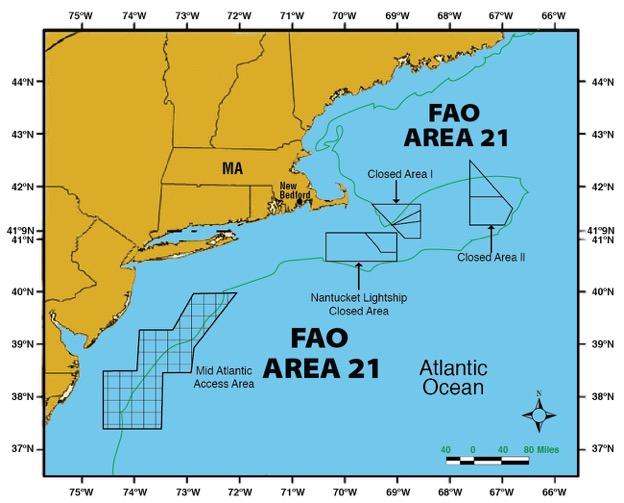North Atlantic Sea Scallop
The Atlantic Scallop, a bivalve mollusk, is harvested for the muscle that holds its two shells together. Stretching from Maine to North Carolina, commercially valuable scallop beds are usually found at depths between 60 and 360 feet. Scallops are harvested mainly by dredge gear. A dredger’s days at sea are limited per year, and the calendar begins annually on April 1, leading to greater scallop supplies in the spring and summer.
Scallops are shucked at sea. Crewmembers remove the adductor muscle by hand and discard the remainder overboard. Only about 10-15 percent of a scallop’s total weight is actually landed. The color of the scallop meat ranges from a creamy white to orange (blushing scallops) depending on the water and what they are eating. The shucked scallops are placed in semipermeable bags and iced in the hold area on the vessel for the journey home.
Sea scallops are much larger than bays; they are offered in the following “count per lb.” sizes: under 10 per lb., 10-20/lb., 20-30/lb. and 30-40/lb.
Management of the U.S. Scallop Fishery has been very effective. The New England Fishery Management Council manages the Atlantic Sea Scallop in cooperation with the Mid-Atlantic Fishery Management Council under the Atlantic Sea Scallop Fisheries Management Plan (FMP). Through several critical practices (gear restrictions, closed areas, limits on days-at-sea, and on-board observers), the U.S. scallop fishery remains a sustainable and well-managed fishery.
The domestically caught sea scallop, Placopecten Magellanicus, satisfies the largest segment of the U.S. market; however, imported scallops from a range of countries, including Japan, Peru, and China play an important role in helping meet market demand.
